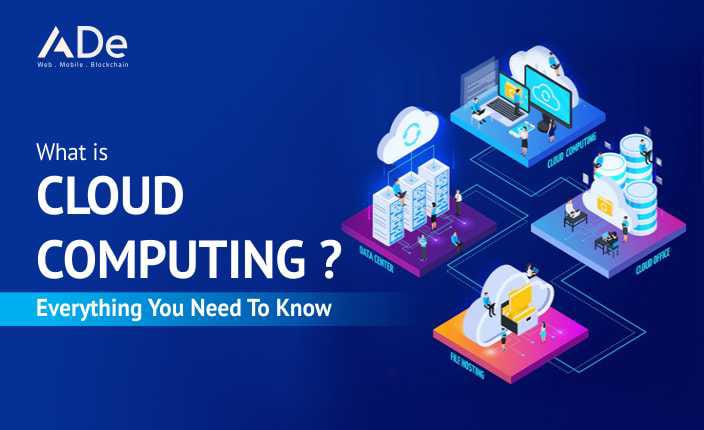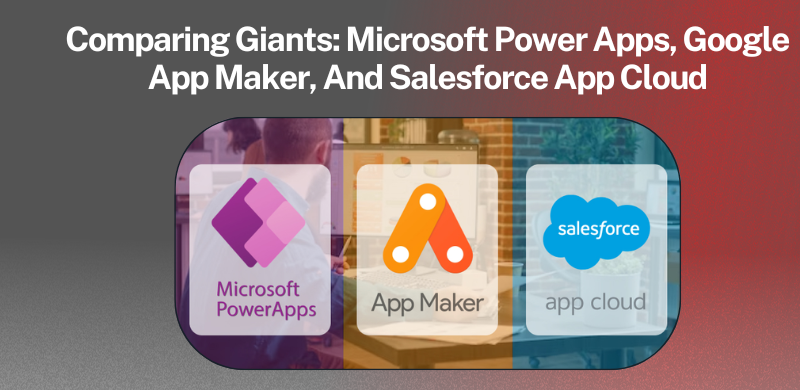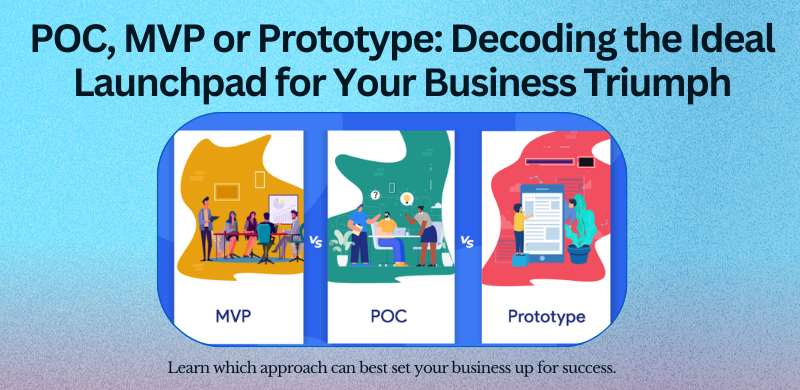Cloud computing often refers to a type of Internet-based computing that provides shared resources and virtual systems to computers and other devices on demand. It is a popular way for companies to store their data and make it easily available for use.
What is Cloud Computing?
Cloud computing is a model for enabling ubiquitous, convenient, on-demand network access to a shared pool of configurable computing resources (e.g., networks, servers, storage, applications, and services) that can be rapidly provisioned and released with minimal management effort or service provider interaction. This cloud model promotes availability and is composed of five essential characteristics, three service models, and four deployment models.
Essential characteristics:
– On-demand self-service: A consumer can unilaterally provision computing capabilities, such as server time and network storage, as needed automatically without requiring human interaction with each service provider.
– Broad network access: Capabilities are available over the network and accessed through standard mechanisms that promote use by heterogeneous thin or thick client platforms (e.g., mobile phones, laptops, and PDAs).
– Resource pooling: The provider’s computing resources are pooled to serve multiple consumers using a multi-tenant model, with different physical and virtual resources dynamically assigned and reassigned according to consumer demand. There is a sense of location independence in that the customer generally has no control or knowledge over the exact location of the provided resources but may be able to specify location at a higher level of abstraction (e.g., country, state, or data center). Examples of resources include storage systems, processors, memory arrays, and networks.
How Does Cloud Computing Work?
Cloud computing is a model for enabling ubiquitous, convenient, on-demand network access to a shared pool of configurable computing resources (e.g., networks, servers, storage, applications, and services) that can be rapidly provisioned and released with minimal management effort or service provider interaction.
This cloud model is composed of five essential characteristics, three deployment models, and four service models.
What are the Types of Cloud Computing?
Cloud computing is a broad term that can encompass many different types of services. Here are some of the most common types of cloud computing:
- Infrastructure as a Service (IaaS): This type of cloud computing provides customers with access to a virtualized IT infrastructure, which can be used to run applications and store data. Common IaaS providers include Amazon Web Services (AWS) and Microsoft Azure
- Platform as a Service (PaaS): This type of cloud computing provides customers with access to a platform that can be used to develop, test, and deploy applications. Common PaaS providers include AWS Elastic Beanstalk and Microsoft Azure App Service.
- Software as a Service (SaaS): This type of cloud computing provides customers with access to a software application that can be used on any internet-connected device. Common SaaS applications include Google G Suite and Microsoft Office 365.
- Storage as a Service (STaaS): This type of cloud computing provides customers with access to storage resources that can be used to store data in the cloud. Common STaaS providers include AWS Simple Storage Service (S3) and Microsoft Azure Blob Storage
Examples of Different Cloud Services
There are three primary types of cloud computing services: Infrastructure as a Service (IaaS), Platform as a Service (PaaS), and Software as a Service (SaaS). IaaS is a pay-as-you-go model in which businesses can rent computing infrastructure, including servers, storage, and networking resources, on an as-needed basis. PaaS is a platform for developing, testing, and deploying applications in the cloud. SaaS is a software delivery model in which software is licensed on a subscription basis and delivered over the internet.
The most popular IaaS providers are Amazon Web Services (AWS), Microsoft Azure, and Google Cloud Platform (GCP). AWS offers a wide range of services, including cloud computation, storage, database, analytics, networking, mobile development, and deployment. Azure offers similar services to AWS, as well as additional services such as artificial intelligence (AI) and the Internet of Things (IoT). GCP provides access to Google’s vast array of tools and services, including BigQuery for data analysis and TensorFlow for machine learning.
PaaS providers include Heroku, App Engine, Cloud Foundry, OpenShift Online 3., Windows Azure Pack.,and Oracle Cloud Platform. Heroku is a cloud platform that enables developers to build and run applications entirely in the cloud. App Engine is a PaaS offering from Google that provides automatic scaling for web applications written in Python or Java.

Who Supplies the Clouds and Services?
Cloud computing is a model for enabling ubiquitous, convenient, on-demand network access to a shared pool of configurable computing resources (e.g., networks, servers, storage, applications, and services) that can be rapidly provisioned and released with minimal management effort or service provider interaction.
This cloud model is composed of five essential characteristics, three service models, and four deployment models.
Compensation for Providers of Services
In the world of cloud computing, providers of services are compensated in a variety of ways. The most common method is through monthly or annual subscription fees. However, some providers also offer pay-as-you-go models, in which users are only charged for the resources they consume.
In addition to subscription fees, providers may also charge for additional services, such as support and maintenance. Some providers also offer discounts for long-term contracts or for customers who purchase multiple services.
Variations for Providers of Service
There are three common variations of cloud processing services: public, private, and hybrid. Public cloud services are provided over the Internet by a service provider. Private cloud services are provided over a private network by a service provider. Hybrid cloud services are a combination of both public and private cloud services.
Service providers vary in the type of service they provide. Some service providers offer all three types of services, while others specialize in one or two. The type of service you need will depend on your business requirements.
Public Cloud Services:
Public cloud services are provided over the Internet by a service provider. The most common type of public cloud service is Infrastructure as a Service (IaaS). IaaS provides you with access to physical and virtual resources, such as servers, storage, networking, and operating systems. Other types of public cloud services include Platform as a Service (PaaS) and Software as a Service (SaaS).
Pros: Benefits include no maintenance, economies of scale, dependable service, and elastic scalability.
Cons: Must adhere to stringent security requirements; frequently seen as dangerous for managing extremely private and sensitive data.
Private Cloud Services:
Private cloud services are provided over a private network by a service provider. Private clouds are often used by large organizations that have strict security requirements. Private clouds can be either on-premises or off-premises. On-premises private clouds are managed internally by the organization. Off-premises private clouds are managed by a third-party service provider.
Pros: control, adaptability, scalability, and security
Cons: More costly and ongoing upkeep (if kept on-site
Hybrid Cloud Services
A hybrid cloud deployment, as the name implies, combines private and public clouds. This infrastructure enables the interchangeable sharing and movement of data, information, and apps. The public side can operate high-volume applications, while the private side can be utilized for sensitive operations like finances and data recovery.
Pros: improved agility, accessibility, and security
Cons: Complex compatibility and increased maintenance
Leading Companies in Cloud Computing
Without continual developments in cloud computing, there wouldn’t be the largest and most well-known IT companies. In reality, the leading providers of cloud computing have sparked a phenomenon known as the “cloud wars” through constant competition and massive strategic SaaS, PaaS, and IaaS installations. And the two businesses listed below have assumed control of the IaaS cloud industry thus far.
Microsoft: As the world’s leading enterprise-cloud provider, Microsoft cloud computing, with its Microsoft Azure and Dynamics 365 offerings, is deeply involved in all three tiers of the cloud. Microsoft is still creating and rolling out technologies related to blockchain, machine learning, and artificial intelligence (AI). More than $1 billion more than any other cloud computing firm, the corporation reported a $6 billion profit in the first quarter of this year.
Amazon: In terms of cloud services, Amazon, a big e-commerce company, isn’t far behind Microsoft. 5.44 billion dollars Although Amazon Web Services (AWS), which offers cloud computing, is still trailing Google’s cloud computing initiatives in 2018 Q1, it is making progress.

Why Choose Us:
Our staff is dedicated to helping customers reach new heights and is enthusiastic about providing quality. We exhibit a strong dedication to sustainable and ethical business practices because we are committed to honesty, accountability, and openness. Cloud computing is a term that covers a lot of ground. In general, it refers to the ability to access data and applications over the internet, rather than having them stored locally on your computer or another device.
This can be done through a variety of different services, including storage, servers, databases, and software. Cloud computing has become increasingly popular in recent years as businesses and individuals alike have come to realize its many benefits, which include lower costs, increased flexibility and scalability, and improved collaboration and productivity.



